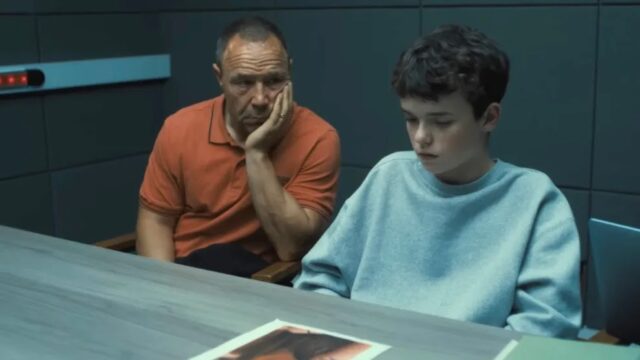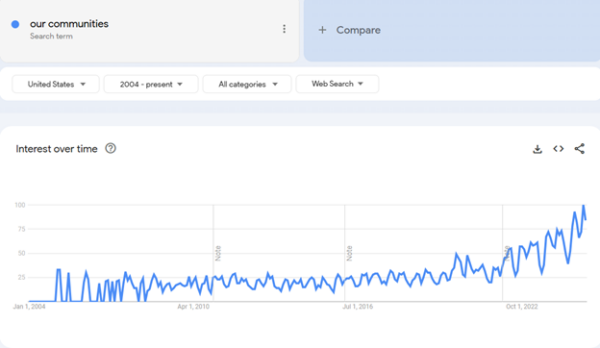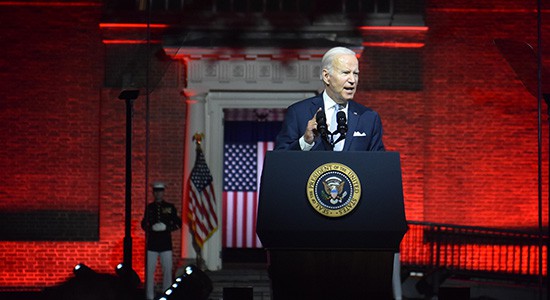‘Adolescence’ and the Invented Racial Enemy

Everything is political under mass democracy. In a large, diverse democracy, perhaps everything becomes anti-white. This seems especially true in the media, and perhaps no country’s press is quite as hysterical as the United Kingdom’s. Currently, what right-wingers despairingly call the “Yookay” is undergoing a full-scale media, cultural, and political panic over a story they invented for the TV series Adolescence. At the same time, the political class ignores the actual problems they have imported.
British “soft power” was once supported by its unparalleled cultural legacy, but much like the government’s public policy, it seems that even “apolitical” British culture has become openly anti-white. For example, Doctor Who is one of the most famous exports of British popular culture. Today, the show has a political mission. In 2016, white actor Steven Moffat said the show needed more diversity, not just for outreach, but as a kind of social duty. This included putting black characters in historic settings where none existed.
The actor argued that this was a Noble Lie. “We’ve kind of got to tell a lie,” he said. “We’ll go back into history and there will be black people where, historically, there wouldn’t have been, and we won’t dwell on that. We’ll say, ‘To hell with it, this is the imaginary, better version of the world. By believing in it, we’ll summon it forth.’”
The modern UK does not seem “better” than what existed before, unless one has a truly powerful imagination. Yet this Tinkerbell version of public policy, where racial harmony is achieved if one just claps hard enough, has a powerful appeal in a mass democracy, especially one with a media-dominated culture like that of the United Kingdom.
Unlike young people in many European countries (and even in the United States), British youth are not turning to the Right. It is more comforting to believe social problems can be solved by properly managing the media, rather than admitting some conflicts are existential and ineradicable. Even moderate liberals cannot admit racial realities without calling into question the entire postwar Western order.
It is therefore not surprising that enforcing narrative control is an important purpose of many “entertainment” programs today. The central premise of progressivism is that man is perfectible; it is just a matter of finding the right management techniques. In the information age, this has led to liberal democracies embracing censorship, deplatforming, and prosecutions to prevent “hate.” If the virtual world can be managed effectively, real-world problems will not occur.
For example, if blacks do not perform well in school, the explanation is not genetic differences but “stereotyping.” Therefore, if blacks get more positive portrayals in media, they will perform better. In the real world, such thinking is fanciful.
However, those in power have not changed their minds. In a liberal democracy, the ultimate power is media power, because media shape public opinion. Social media and the internet have made it harder for elites to push a unified message on the masses. Naturally, elites want to stop this. Nothing can ever be truly “apolitical” in a democracy.
The German philosopher Carl Schmitt wrote in The Concept of the Political (1932):
The equation state = politics becomes erroneous and deceptive at exactly the moment when state and society penetrate each other. What had been up to that point affairs of state become thereby social matters, and, vice versa, what had been purely social matters become affairs of state — as must necessarily occur in a democratically organized unit. Heretofore ostensibly neutral domains — religion, culture, education, the economy — then cease to be neutral in the sense that they do not pertain to state and to politics. As a polemical concept against such neutralizations and depoliticalizations of important domains appears the total state, which potentially embraces every domain. This results in the identity of state and society. In such a state, therefore, everything is at least potentially political, and in referring to the state it is no longer possible to assert for it a specifically political characteristic.
In his excellent book The Total State (2024), political columnist Auron MacIntyre argues that this is precisely what is happening to the United States. However, it is not just a structural flaw of democracy. The racial diversity that those who rule the West have imported means that citizens have less in common. Most Western countries today do not even have a common culture. Our rulers implicitly admit this when, instead of using phrases such as “my fellow citizens,” they appeal to “our communities” — mutually exclusive tribes that must be carefully managed in a multicultural powder keg.

Google chart showing rise of instances of the “our communities” phrase in US (January 2004 – February 2025)
New South Wales Premier Chris Minns recently admitted as much. “We live in the best country in the world, but people come to Australia from all different races and religions, different countries, different cultures, because they want to live together in peace and harmony,” he said at a March 18 news conference. “You have to take steps to protect that. There can’t just be a willy-nilly, race to the bottom where civic society turns a blind eye and says ‘freedom of speech, people can say what they want.’ That’s not the case in New South Wales. We don’t have the same freedom of speech laws that they have in the United States, and the reason is that we love the country that we’ve got here and we’re going to take steps to protect what’s been built up over decades.”
If the White Australia policy had been kept in place to protect what had been built up over a century, Australians would still have what was once considered the most essential freedom of all. The same is true of the United Kingdom and Europe, where free speech has long since died. Vice President JD Vance pointed this out. Yet even this understates the threat. Multiracial societies must be united by something, and the best way of uniting a group is through a common enemy, and it is the white man who finds himself Public Enemy Number One in his own country, with racism blamed for any conceivable social problems Non-whites, regardless of their shameful behavior, remain victims.
Sam Francis memorably coined “anarcho-tyranny” to describe the increasing state repression of the (mostly white) law-abiding citizens and indulgence of non-white criminals. Lawrence Auster on his View from the Right blog defined what he called the First Law of Majority-Minority Relations: “The worse any designated minority or alien group behaves in a liberal society, the bigger become the lies of Political Correctness in covering up for that group.” Auster also framed the “first corollary” of the First Law. “The more egregiously any non-Western or non-white group behaves, the more evil whites are made to appear for noticing and drawing rational conclusions about that group’s bad behavior.”
By ignoring actual social dysfunction and cracking down on the law-abiding, the political class increases its own power, creating more problems for intrusive government to manage. It also establishes its moral claim to leadership. Politicians pose as defenders of democracy against racists, extremists, and fascists.

September 1, 2022: Joe Biden delivers a primetime speech on the battle for the Soul of the Nation, mentioning Donald Trump, ”MAGA Republicans,” and democracy. (Credit Image: © Kyle Mazza/TheNEWS2 via ZUMA Press Wire)
The problem is that this denies reality and can be taken only so far. Even many non-whites do not want to live in crime-ridden squalor. Leftists in America are still reeling from the non-white shift toward Republicans in 2024. Yet white advocates should not assume that reality always wins in the end. Mass media allow elites to invent an alternate reality that is more emotionally compelling than the real thing. Even when people know at some level they are watching a television show or movie, the emotional responses are real, and can sometimes be even more engrossing than what they experience in real life.
If a show or film is of sufficient quality, and plays upon long-established assumptions of the audience (such as the perceived moral superiority of anti-racism), it can feel “real” to the audience. Films such as Roots, Schindler’s List, and Glory have shifted public debate about race in the United States toward the political Left. In an earlier era, Birth of a Nation had such a big impact that some credit it with fueling the growth of the second-era Ku Klux Klan.
Yet these and other films at least covered events that were based in history, even if details are exaggerated for dramatic effect or skewed for political purposes. One cannot deny that black slavery was real, even if no slave was whipped for not calling himself “Toby.” However, could a regime invent a case and use it as “proof” to push repressive legislation? Could it even reverse who is considered the stereotypical victim and oppressor in the public mind? If democracies could do such a thing, it would mean they could essentially dictate policy outcomes from the top down, regardless of the facts.
Such an experiment seems to be underway in the United Kingdom with the television series Adolescence. It focuses on a 13-year-old white boy from an intact family who kills a female classmate because he has been “radicalized” by the internet. The reaction from the British press and government is extraordinary, with reporters and politicians arguing quite seriously that the show must be integrated into school curricula and that social media must be even more heavily regulated to prevent “radicalization.” Such figures seem especially to hate Andrew Tate, who is attacked by name in the show.
Progressives have long mocked religious conservatives who, in a moral panic, supposedly tell parents to prevent their children from indulging in entertainment such as Dungeons & Dragons or violent rap. Yet the message of Adolescence is clear: Parents can never let their guard down, even for a moment. Though the protagonist has a loving family, pro-masculinity influencers corrupt him while he is in his room with the door closed. The same people who would laugh at conservative Christians demanding parents throw out their children’s rap albums seem deeply concerned their teenage boy could be watching the wrong clips on TikTok.
The reaction from the press is nothing short of rapturous. State media BBC said it is being hailed as “flawless” TV. Tom Peck at The Times said it was “perfect.” Lucy Mangan at The Guardian was more restrained, calling it merely “close” to perfection. Jake Kanter at Deadline calls it “flawless.” Even Jeremy Clarkson, who has sometimes been put forward as a potential British populist champion because of his opposition to the Labour government’s agricultural policies, called it “masterful.”
One might dismiss this as marketing, except government officials seem to be taking it as a kind of documentary and a call to action. Parliament reportedly invited the writers to discuss the themes of the show with MPs. Prime Minister Keir Starmer wants it shown in schools. A female member of parliament said it shows the danger of “online male radicalization” and asks for more government control over social media. Schools should seek to teach young men about “healthy relationships,” supposedly to counter Andrew Tate’s influence. One wonders whether schools with non-white or Islamic student bodies will bother, or whether this will apply only to British children.
However, an objective analysis shows that more young women are being “radicalized” by social media than young men. This shift to extremist feminism and progressivism serves the interests of media, academia, and most governments. Therefore, it is not a threat.
In fact, the moral panic over Adolescence suggests that critics are right that social media can brainwash people, but they are worried about the wrong people. It is the liberal elites and the Great and the Good who are having a hard time distinguishing fantasy from reality.
The show itself displays the schizophrenia we often see in media with young white males. The main character is weak, self-loathing, and wets himself when he is arrested. His father (played by Stephen Graham) is meant to be the moral center of the film, but the show cannot help but take shots at him too, showing his wife to be sexually uninterested in him. White males, it seems, are violent monsters who could overthrow society at any moment, but they are also pathetic pushovers. Whites are both all-powerful and pitiable.
Meanwhile, Stephen Graham, who has mostly built his career around playing “tough guy” characters, also wants censorship. He claims he suffered “racist abuse” while growing up because he had a Jamaican grandfather, though this has not stopped him from being cast as a skinhead in the past. “What is happening to our young men these days and what are the pressures they face from their peers, from the internet and from social media?” he asks rhetorically.
Mr. Graham has referred to three cases that might have inspired the show. He cited the case of Elianne Andam as an inspiration. She was a 15-year-old black girl stabbed to death by 17-year-old Hassan Sentamu, a native of Uganda. Mr. Sentamu was recently sentenced to life in prison for the crime. He had a long history of attacking girls and carrying weapons. Unlike in Adolescence, the murderer is exactly the kind of person you think would commit such a crime, with the killing preceded by less serious but ominous acts.
Mr. Graham also cites a stabbing in Liverpool. In 2021, a young white girl, Ava White, was stabbed to death by an unnamed perpetrator (who cannot be identified for legal reasons). The victim’s mother, however, says the show is not based on her daughter’s death. Yet, in the same BBC interview, she praises the show for going after “all the dangers on social media and the bad influencers like Andrew Tate.” Because the murderer has never been identified, his race cannot be determined. Though (blurred) video footage suggests he is probably not black, it is impossible to tell if he is white or not.
Finally, Mr. Graham cites the stabbing of “Brianna” Grey. Brianna Grey was killed by a boy and a girl, the latter of whom had reportedly become “obsessed” with the victim. Yet Grey was not a young girl but a boy who had transitioned. At any other time in history, we would call this the murder of a teenage boy by a co-ed team, not an act of anti-female violence. Though media coverage of the case focused on “transphobic” rhetoric, the two murderers had made a “kill list” of other children to attack.
Thus, of the three cases that reportedly inspired Adolescence, only the Ava White case even slightly resembles what is being portrayed. Moreover, because we do not know who the murderer in that case is, we cannot even say that much with any confidence. On social media, many are pointing this out. In response, co-scriptwriter Jack Thorne has denied that the series is based on fact. “There is no part of this that’s based on a true story, not one single part,” he wrote.
Perhaps he is telling the truth. However, he wants real-life consequences to result from a show that he claims is totally fictional. He wants his preferred policy outcomes, but he does not want the responsibility of making a case based on factual information.
Jack Thorne says we need more government control over speech. “We need government to do something because they need to control the conversation on this one,” he told the BBC Breakfast audience. “I hope that means we can use this moment to provoke this Government to consider quite serious change,” he said on the BBC Newsnight program. However, now that people online are pointing out who is actually committing much of the violence in the United Kingdom, he is upset. He told The News Agents podcast: “We are not making a point about race with this. We are making a point about masculinity. We’re trying to get inside a problem. We’re not saying this is one thing or another. We’re saying this is about boys.”
Yet why should we accept his argument? “Representation matters,” we are often told, and the fact is that a white boy was identified as the face of violence against women in a show that the government is trying to use as the basis for action. Besides, why should we listen to the writer’s supposed point about masculinity when he simultaneously says the show is entirely fiction?
Not surprisingly, Jack Thorne also wants more funding from the British government for the arts. Warp Films, which produced the show, received money from the government-funded UK Global Screen Fund. We are thus in the absurd situation where actors and writers made up a story, made sure to make a white boy the enemy, and used their fantasy to lobby for more restrictions on free speech. Meanwhile, politicians and journalists are joining this totally imaginary “movement” to crack down on what was once the most essential freedom in a democracy. They made up an imaginary figure to get mad at.
Earlier this week, Mohammed Sohail Farooq was sentenced to life in prison for a plot to attack a hospital where he worked as a “trainee nurse.” He was reportedly influenced by the Islamic State.
According to the Daily Express, 99.5 percent of crimes in Great Britain result in no one being jailed. Habitual criminals are among those who benefit, with those who have received more than 50 convictions having been spared jail in more than 50,000 cases since 2017. The British state cracking down on speech while refusing to prosecute real crime, even by habitual offenders, is precisely what race realists would predict.
Even the “Two Minutes Hate” against Andrew Tate makes little sense. The influencer is more popular among non-whites than whites, with more than 40 percent of blacks viewing him positively.
Nonetheless, even the parents of one of the victims of the Southport mass stabbing attack think part of the solution — in addition to more knife control — is to prevent people from seeing Andrew Tate’s content online. In reality, the Southport killer was Axel Rudakubana, a non-white with a long history of extremism known to the government. This did not stop Keir Starmer from blaming “young men in their bedrooms” viewing extremist content. Though the suspect possessed an Al-Qaeda manual and reportedly made ricin, police claim they had found “no motive.”
In the aftermath of the crime, the British state ruthlessly suppressed unrest, imprisoning British people who tweeted about the case. When one considers this reaction, it is difficult to believe the British government actually wants to stop crime and that it is not merely interested in silencing white men who could pose a political threat.
The practice of changing the racial identity of characters for fictionalized crime dramas is long established. In the British film Eden Lake (2008), a working-class group of youths terrorizes a white middle-class couple. In one notable scene, the group’s leader (a white boy) “necklaces” a non-white child by burning him alive. Of course, not only have “anti-apartheid’ activists in South Africa practiced such things, but a white child named Kriss Donald was burned alive by Pakistanis in Scotland after being beaten and stabbed 13 times. The case, which occurred four years earlier than the movie’s release, received little media attention.
One of black actor Samuel L. Jackson’s most iconic roles was A Time to Kill (1996). The film, as well as the novel on which it is based, is a vicious racial attack on whites. The movie opens when a young black girl is raped and nearly killed by two white men. When their ensuing trial appears ready to free the duo, the girl’s father — played by Mr. Jackson — guns them down, while also severely wounding a white deputy sheriff. In the father’s trial, while being cross-examined by the DA, the father shouts, “Yes, they deserved to die and I hope they burn in hell!” His heroic white lawyer confronts the prejudice of the white community and secures an acquittal, to the rage of the Ku Klux Klan.
Of course, white-on-black rapes are vanishingly rare in real life. More importantly, the real case that inspired the novel, according to author John Grisham, was the July 11, 1984, rape of two white sisters, Julie (16) and Marcie (12) Scott, by William James Harris, a black man. Presumably, the brutal rape of two white girls by a black man is not artistically compelling, so the races were reversed. This gave the audience an opportunity to celebrate a triumph against imaginary political and racial enemies.
In 1981, Anthony Jacques Broussard, a black 16-year-old, killed 14-year-old Marcy Renee Conrad, a white girl. He raped the corpse and bragged about his deed to classmates. This inspired the film The River’s Edge (1986), which critics loved. That could partly be because the murderer was transformed into a white character, played by Daniel Roebuck.
Even relatively trivial incidents can be race swapped. One of the earliest truly viral media phenomena was the 2010 case of “Epic Beard Man” in California. Thomas Bruso, an elderly but powerful white man, beat up a black man who had attacked him on a bus. A black woman who taped the fight racially abused Mr. Bruso during the confrontation, calling him “pinky” and switching quickly from urging her racial kinsmen to attack him to wanting to press charges. It is a fascinating vignette about the way race really works in America. The video went viral and inspired a movie, Bad Ass (2012). However, in the film, the hero is played by the Hispanic actor Danny Trejo, who wins fame by beating up two white skinheads on a bus. In the sequel, Bad Asses (2014), he even gets a black sidekick who wishes he could have been the first black to play in the NHL.
There are many other cases in television and movies. Steve Sailer once observed that it is very likely there have been more white murderers featured on Law & Order than there were actual white murderers in New York City. Yet fiction can shape real-world beliefs. Unless one directly confronts racial reality, it is easy to live in a fantasy world.
This provides an opening for malicious people to manipulate others. With Adolescence, we see actors, politicians, and journalists joining forces to throttle speech in the name of fighting an imaginary enemy. Worse, these same people have done little to confront actual violence in once-great Britain, especially in the case of the white girls who were victims of grooming gangs. Using one’s own fictional fantasies as real-world rationalizations for state repression may be beyond anything even the USSR attempted. Yet for those who believe misleading media can impose a new reality, the anti-white ends justify the duplicitous means. It is difficult to believe those behind Adolescence do not know exactly what they are doing. There is nothing noble about this lie.
https://www.amren.com/features/2025/03/adolescence-and-the-invented-racial-enemy
